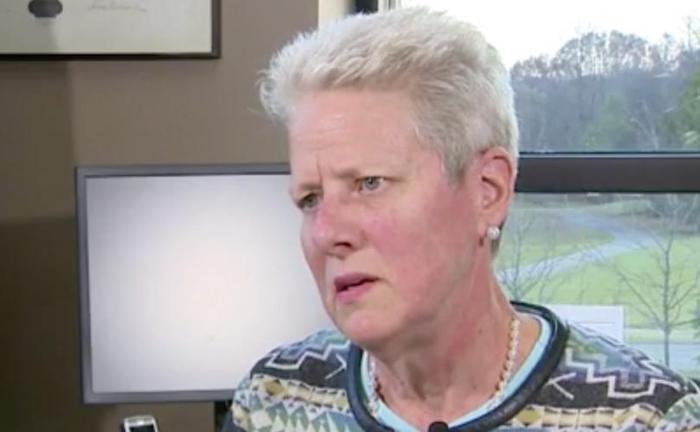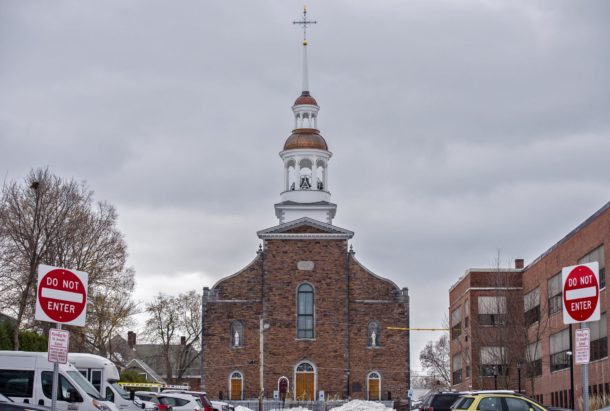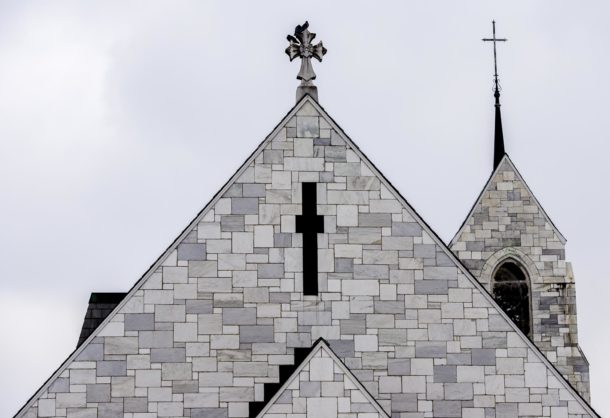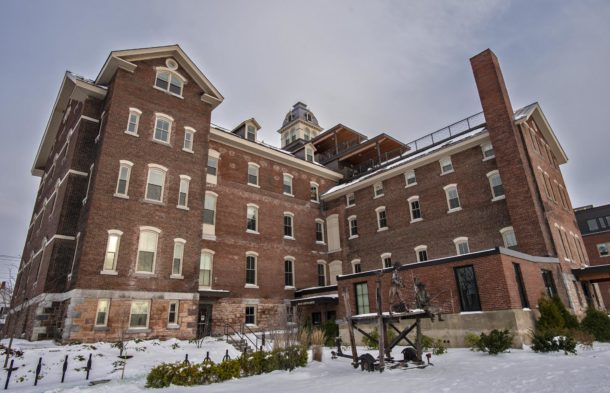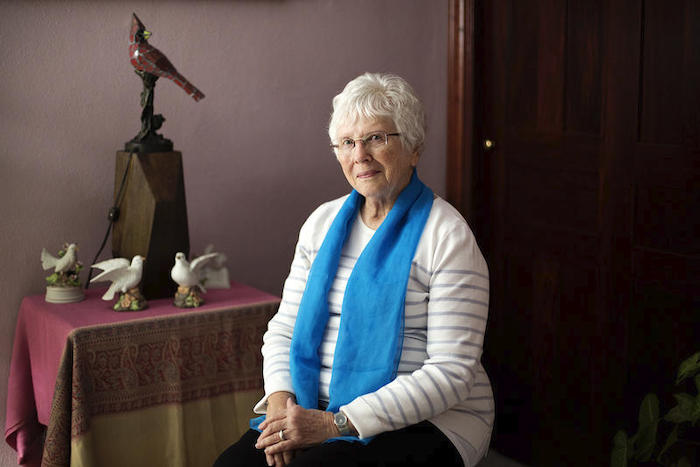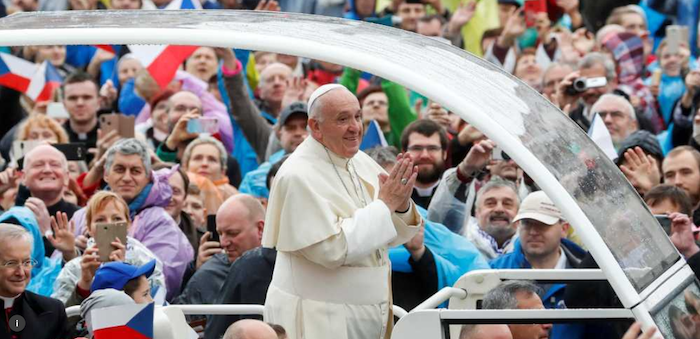Sexual abuse claim dismissed by church foreshadowed years of allegations against Catholic bishop
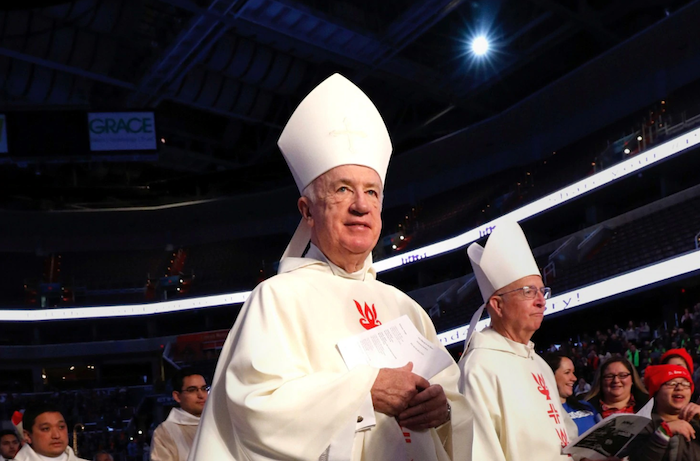
Michael J. Bransfield was just a couple of years into his tenure as West Virginia’s bishop in 2007 when one of his former students called a church sexual abuse hotline. Decades earlier, at a Catholic high school, Bransfield had repeatedly summoned him from class, escorted him to a private room and fondled his buttocks and genitals, the caller said.
The former student said he was a freshman when the unwanted touching began.
It was a stark warning about a cleric who allegedly went on in the next decade to grope and sexually harass seminarians and young priests in West Virginia.
The former student’s allegation, first reported to the Archdiocese of Philadelphia, where Bransfield taught, was eventually referred to the highest levels of the U.S. Catholic Church and the Vatican, as well as to the police, according to the findings of a recent church investigation obtained by The Washington Post.
But no action was taken against Bransfield — and the church’s own investigators now say the allegation may warrant further examination.
The former student, speaking to reporters for the first time, told The Post that church officials might have prevented Bransfield’s alleged wrongdoing in the years since if they had taken his claim more seriously.
“They looked the other way,” he said, speaking on the condition of anonymity because he has not told his family about his experience. “More people got victimized.”
Bransfield had close ties to two high-ranking clerics in Philadelphia who had responsibility for assessing sexual abuse claims at the time, a Post examination found. The cardinal in Philadelphia and one of his top aides received thousands of dollars in cash gifts from Bransfield before or after he was absolved of the hotline allegation in a process that was never made public, according to internal financial documents.
The Post has previously reported that Bransfield gave $350,000 in cash gifts, using church money, to clerics in the United States and at the Vatican over more than a decade. This is the first reported example of Bransfield giving money to a cleric involved in ruling on a sexual abuse claim against him before his retirement.
Bransfield stepped down as bishop of the Diocese of Wheeling-Charleston in September 2018, as church officials announced an investigation into allegations of sexual and financial wrongdoing spanning his 13-year tenure.
In February, a team of lay investigators, led by outside attorneys, concluded that he subjected eight young clerics in West Virginia to unwanted sexual overtures, sexual harassment and sexual contact.
The alleged sexual and financial misconduct was documented in a confidential report that was sent to the Vatican. Those findings remained secret until June, when The Post published the first in a series of stories drawing on the confidential report and other internal church documents.
The existence of the hotline complaint became public several years ago during an unrelated sexual abuse trial of two priests, but details of the allegation and the church’s handling of it have not been previously reported.
In a recent interview, Bransfield denied any sexual or financial misconduct. He said the former student’s allegations were untrue and probably motivated by a desire for financial payment.
“They investigated the whole thing, and he’s a wack job,” Bransfield said. “There was never any grounds to it.”
Bransfield said that while teaching at Lansdale Catholic High School in the late 1970s, he regularly took students out of class and privately interviewed them about their school and family lives but that nothing untoward happened.
“I was chaplain, and I’d ask them how they were doing,” he said. “It was a normal thing.”
Ken Gavin, a spokesman for the Archdiocese of Philadelphia, defended the handling of the claim but did not respond to specific questions about the process.
“I can say with certainty that this matter was not only investigated internally,” he said in a statement. “It was reviewed by law enforcement on two occasions and no criminal charges were filed.”
At the time, church officials privately concluded there were inconsistencies in the former student’s account, but the recent church investigation raised questions about that conclusion, according to the confidential report. Investigators wrote that such inconsistencies in decades-old accounts of sexual abuse are common.
The former student told The Post that the law enforcement investigations stalled because police told him they could not guarantee his identity would not become public. Law enforcement authorities did not respond to requests for comment.
He recently filed a claim to a victims compensation fund in the Philadelphia Archdiocese.
‘He told me to relax’
By the time of the hotline complaint, Bransfield had risen to prominence in the Catholic Church.
In the 1970s, he served as a religion instructor and chaplain at Lansdale High School in Montgomery County, Pa., about 30 miles from downtown Philadelphia. He went on to assignments at the Basilica of the National Shrine of the Immaculate Conception in Washington, where he eventually rose to rector. In 2005, he was installed as bishop in West Virginia.
That year, though, a landmark grand jury report about sexual abuse of minors by Philadelphia clerics mentioned Bransfield, saying that a priest who was a friend of his had sodomized a teenage boy at Bransfield’s New Jersey beach house.
The former Lansdale student saw news coverage of the grand jury report in the Philadelphia press and began considering whether to come forward, he told The Post.
“This is something I was going to take to my grave,” he said. “You feel shame. It’s sad. It’s very sad.”
The Post located the former student — whose name is not included in the confidential investigative report — with help from a Catholic advocacy group. He agreed to be interviewed at his attorney’s Philadelphia office.
The Post generally does not identify alleged victims of sexual abuse without their permission.
Now in his mid-50s, he has worked a variety of blue-collar jobs. He comes from a large family of devout Catholics. Since graduating from Lansdale, he said, he has struggled with depression and drug and alcohol abuse.
In 2007, he decided to call the hotline established by the Philadelphia Archdiocese several years earlier in response to the church’s sexual abuse crisis. That call was the beginning of a long effort by the former student to hold Bransfield to account, he said.
He told a private investigator working for the archdiocese that Bransfield started singling him out for extra attention soon after his freshman year began. Bransfield summoned him out of classes, sometimes by knocking on the classroom door and beckoning him by crooking his finger, he told The Post.
At first, Bransfield took him on walks and showed him around the school. Eventually, Bransfield steered the teen into a small office he used near a teachers’ lounge. It was there, he said, that Bransfield directed him to stand behind a desk, beside Bransfield’s chair, and read a passage from a book.
“He told me to relax and read and calm down,” the former student said in the interview.
Bransfield put his hand on the teenager’s lower back, then moved it to his buttocks and began fondling his genitals over his clothing, the former student said. Similar episodes happened at least five times during his freshman and sophomore years, he said.
He said he told no one about the encounters until the day he called the hotline.
After speaking with the archdiocese’s investigator, the former student asked for a copy of his report. He said it never arrived.
A different investigative path
In the years following his complaint, Bransfield’s accuser said he was left in the dark.
Behind the scenes, Cardinal Justin Rigali, then the archbishop of Philadelphia, and other ranking clerics were handling his complaint, according to the confidential report.
Under procedures established after the clergy sexual abuse scandal, each diocese and archdiocese set up an independent review board to assess sexual abuse claims against priests. The accusation against Bransfield took a different path because he had been elevated to bishop before the complaint was made, church investigators wrote in the recent confidential report.
In October 2009, behind closed doors, Rigali formally declared the allegations were unsubstantiated because of inconsistencies in the former student’s account, including precisely when and where the alleged abuses occurred, according to the confidential report.
Rigali, who is now retired, did not respond to requests for an interview.
Before and after the secret pronouncement about his fate, Bransfield maintained warm relations with leaders of the Archdiocese of Philadelphia, where he started his career.
Using money from the West Virginia diocese, Bransfield gave some of those clerics thousands of dollars in cash gifts. Among them was Rigali, who in 2011 received a check for $1,000, internal documents show.
From February 2009 through last year, Bransfield gave five checks totaling $3,750 to then-Monsignor Timothy C. Senior, the vicar for clergy in Philadelphia, whose responsibilities included helping to assess sexual abuse claims against clerics.
Gavin, the spokesman for the Philadelphia Archdiocese, declined to say whether Senior played a role in Bransfield’s case.
Among Rigali’s top aides was a nephew of the bishop’s, the Rev. Sean Bransfield, an assistant judicial vicar. Starting in 2013, Bishop Bransfield gave his nephew more than $9,000 over five years.
In a statement earlier this year for an article about the gifts, Senior said that he thought the money was Bransfield’s and that he had “done nothing wrong” in accepting it.
Sean Bransfield said through a spokesman in June that “he logically assumed gifts from a family member came from Bishop Bransfield’s personal funds” and denied wrongdoing.
Michael J. Bransfield said the cash gifts had no connection to the claim against him. He described himself as a “very close friend” of Senior and said they had exchanged gifts over the years.
“I was very friendly with him,” Bransfield said.
In the mid-1970s, Senior was a student of Bransfield’s at Lansdale High School, graduating before the alleged abuse happened. In July 2009, shortly before Rigali absolved Bransfield of wrongdoing in connection with the hotline complaint, Rigali and Bransfield jointly led the ceremony for Senior’s ordination as auxiliary bishop.
Reporting his accusation again
A few details of the hotline claim became public in 2012, during a sensational trial of two Philadelphia priests accused of sexual abuse and child endangerment.
In April that year, newspapers reported that a witness had mentioned rumors about Bransfield, catching the attention of the former Lansdale student who had called the hotline five years earlier.
He decided to contact the archdiocese to again tell his story to a church official. “I’m like, ‘This still has to be addressed. I want to do something here,’ ” he said.
In response to media questions, church officials publicly acknowledged the 2007 hotline complaint but released few details. The officials said they were reexamining the allegation and had notified law enforcement authorities in Montgomery County, Pa., as they did immediately after the hotline call several years earlier.
County detectives spoke with the former student and took him to Lansdale High School to talk in more detail about the claims. But the former student said he saw an administrator he knew and balked at going in. The former student feared he might be recognized and did not want anyone to know he had been abused.
Montgomery County authorities “determined further investigation was unwarranted,” the recent confidential church report said.
The archdiocese sent the allegation to the Vatican, according to previously unreported details in the report.
The matter was reported first to the apostolic nunciature, the Vatican’s diplomatic outpost in Washington, D.C. It was then forwarded to Cardinal Marc Ouellet, head of the Vatican office that oversees bishops worldwide, the investigative report said.
“The investigative file we reviewed does not reflect any further action,” the report said.
A Vatican spokesman did not respond to questions about the handling of the complaint or to requests for an interview with Ouellet.
Bransfield, meanwhile, was living extravagantly as head of the diocese in West Virginia. Church investigators found that he spent millions of dollars in the diocese’s money on personal expenditures, including travel by private jet and renovations to his church mansion, according to internal church documents.
Bransfield also cultivated seminarians and young priests and subjected them to unwanted attention, including sexual remarks and intimate touching, according to the confidential investigative report. In some cases, he groped or kissed them, it said. He also allegedly exposed himself and made sexually charged remarks about their bodies. Bransfield asked that some of the young men accompany him on lavish trips to Florida, the Caribbean, Paris, London and Rome.
Some of the young clerics “were broken by the experience,” suffering depression or fear as a result of their interactions with Bransfield, the investigative report said.
At the same time, Bransfield was drawing on diocese funds to send cash gifts to influential clerics who had sway over his career. They included tens of thousands of dollars sent to the nuncios in Washington and more than a dozen cardinals in the United States and at the Vatican, some of them aides to the pope.
During the recent investigation, Bransfield’s accuser spoke several times with a church investigator.
The former student’s attorney, David Inscho, insisted the church could have done much more to stop Bransfield when his client came forward. “The church had everything they needed . . . to start canonical proceedings, to have had him removed from active ministry,” Inscho said.
In their recent report about Bransfield, the church investigators cast doubts on the thoroughness of the earlier investigations of the former Lansdale student’s claims. They said that the inconsistencies in the victim’s accounts are “typical of these types of cases when a substantial amount of time has passed” and that they believed the matter “may warrant further inquiry.”
“The victim remains willing to be cooperative in any further investigation that the Philadelphia Archdiocese may feel is warranted,” they wrote.
Complete Article ↪HERE↩!

